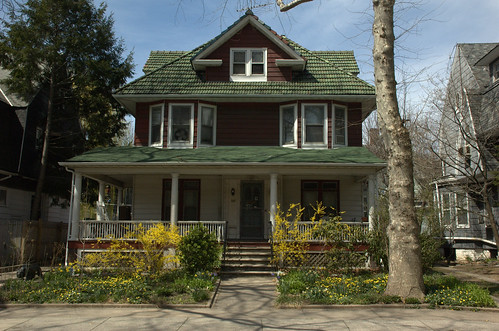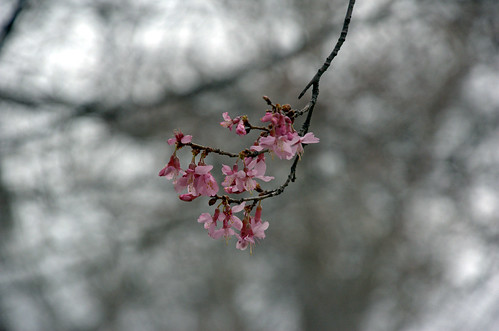Update: June 16: Community Visioning Workshop for a new Communal Garden
Update, 2010.06.04: Added information about the site.
Update, 2010.06.03: Added registration link.
The Parsonage, Flatbush Reformed Church, 2103 Kenmore Terrace, corner of East 21st Street, Flatbush, Brooklyn
Thus Sunday, June 6, from 4-6pm, we’ll be holding the first of two Community Visioning Workshops for a new communal garden on the grounds of the landmarked Flatbush Reformed Church. One site is a small, fenced-off area. The other is the front lawn of the Parsonage. This landmarked historic building was built in 1853 – though portions of it may be even older – and moved to this site in 1913.
Front lawn, looking east from East 21st Street
The main area is the front lawn of the Parsonage. It’s a large area, about 25-feet deep, from the fence along Kenmore Terrace to the porch of the house, and about 85-feet long, from East 21st Street to the Church parking lot. There are opportunities to further develop the buffer plantings, 3-1/2-feet between the fence and the sidewalk, that Church members have already established.
Buffer Plantings, looking from the entrance gate toward East 21st Street
The site is dominated by large, mature Oak trees lining the fence on Kenmore Terrace and East 21st Street. These cast dense shade, and working with this constraint will be one of the challenges for designing the garden and plantings. I have a lot of experience with urban shade gardens, and see the potential in this site.
The most interesting aspects of this project will be the community partnerships. CAMBA, a large community-based service organization, has a young mothers program that meets at the Parsonage. We want the space and gardens to be child-friendly, and provide opportunities for exploration and learning about nature and gardening. The Flatbush Farm Share CSA distributes from the front lawn of the Parsonage. They offer shares for all income levels, and subsidize low-income members. We want to accommodate their needs for space and provide opportunities for education programs.
Soil Sampling for Texture Analysis
Press Release
Sustainable Flatbush is partnering with the Flatbush Reformed Church to create a new community garden! The whole community is invited to be involved in the planning and care of this neighborhood green space.
Two Community Garden Visioning Meetings have been scheduled for Sunday June 6th and Wednesday June 16th. At these brainstorming sessions community members will visit the garden area, located on church grounds, and work collaboratively to envision this new public green space: what can be grown, how to best utilize the space, how the garden will be built and maintained, what to name the garden, and how to be a part of it!
The new community garden is a joint project of Sustainable Flatbush’s Urban Gardens & Farms Initiative and the Flatbush Reformed Church.
The Urban Gardening and Farming Initiative works to foster community gardening efforts in Flatbush, promoting healthy local food, sustainable horticulture practices, and community building and beautification.
Sustainable Flatbush brings neighbors together to mobilize, educate, and advocate for sustainable living in our Brooklyn neighborhood and beyond.
Flatbush Reformed Church is a welcoming, inclusive and ecumenical Church in the heart of Brooklyn.
WHAT: Community Garden Visioning Meetings
WHEN: Sunday, June 6th at 4pm and Wednesday, June 16th at 6pm.
WHERE: Flatbush Reformed Church, located at 890 Flatbush Avenue at Church Avenue, just three blocks east of the Q train or three blocks west of the 2 train, Church Avenue stop.
Sign up here to attend a Visioning Meeting.
Refreshments and childcare will be provided.
Related Content
Links
New Community Garden at Flatbush Reformed Church!, Sustainable Flatbush, 2010-05-31
































